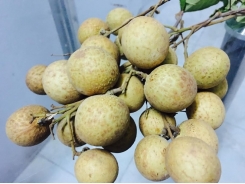Over $13 billion spent on agriculture restructuring

The agriculture restructuring programme is implemented from 2016 to 2020 with a total capital of VNĐ306.66 trillion (US$13.5 billion). — Photo gaohoasen
HÀ NỘI — Prime Minister Nguyễn Xuân Phúc has approved a target programme to restructure the agricultural economy, prevent natural disasters and stabilise people’s lives with total capital of VNĐ306.66 trillion (US$13.5 billion).
The programme, implemented from 2016 to 2020, will upgrade the seed producing establishments at central and local levels; invest in the construction of synchronous infrastructure for some key seed producing regions; produce a variety of seeds; and assist enterprises to implement projects in the field of special preferential investment.
The programme will support 2,000 newly established cooperatives and reorganise 90 per cent of existing agricultural cooperatives in accordance with the Law on Cooperatives in 2012.
It will consolidate and renovate some 650km of sea dykes and 550km of river dykes; proactively prevent and limit damage caused by natural disasters; and repair, upgrade and ensure the safety of 1,150 small and medium water reservoirs to provide sufficient fresh water for the population of 12 large islands.
The programme also aims to stabilise the lives of ethnic minority nomad households and about 11,500 households in disaster-prone areas; and resettle households in the wake of irrigation and hydropower works.
It is also designed to help the cultivation and animal husbandry sectors carry out restructuring in a modern way to create high added value and sustainability and contribute to raising the annual growth rate of cultivation to 2.5-3 per cent and husbandry to 4-5 per cent.
Có thể bạn quan tâm
Phần mềm

Phối trộn thức ăn chăn nuôi

Pha dung dịch thủy canh

Định mức cho tôm ăn

Phối trộn phân bón NPK

Xác định tỷ lệ tôm sống

Chuyển đổi đơn vị phân bón

Xác định công suất sục khí

Chuyển đổi đơn vị tôm

Tính diện tích nhà kính

Tính thể tích ao hồ



 Thailand top supplier of fruits to VN
Thailand top supplier of fruits to VN  Vietnam fruit producers struggle to enter export markets
Vietnam fruit producers struggle to enter export markets